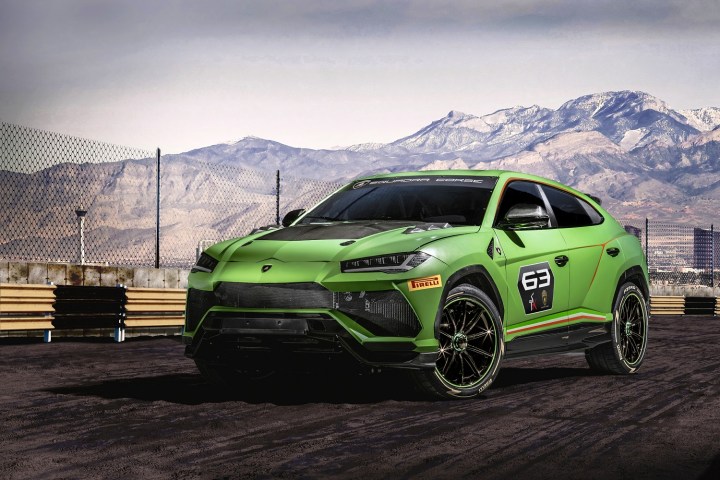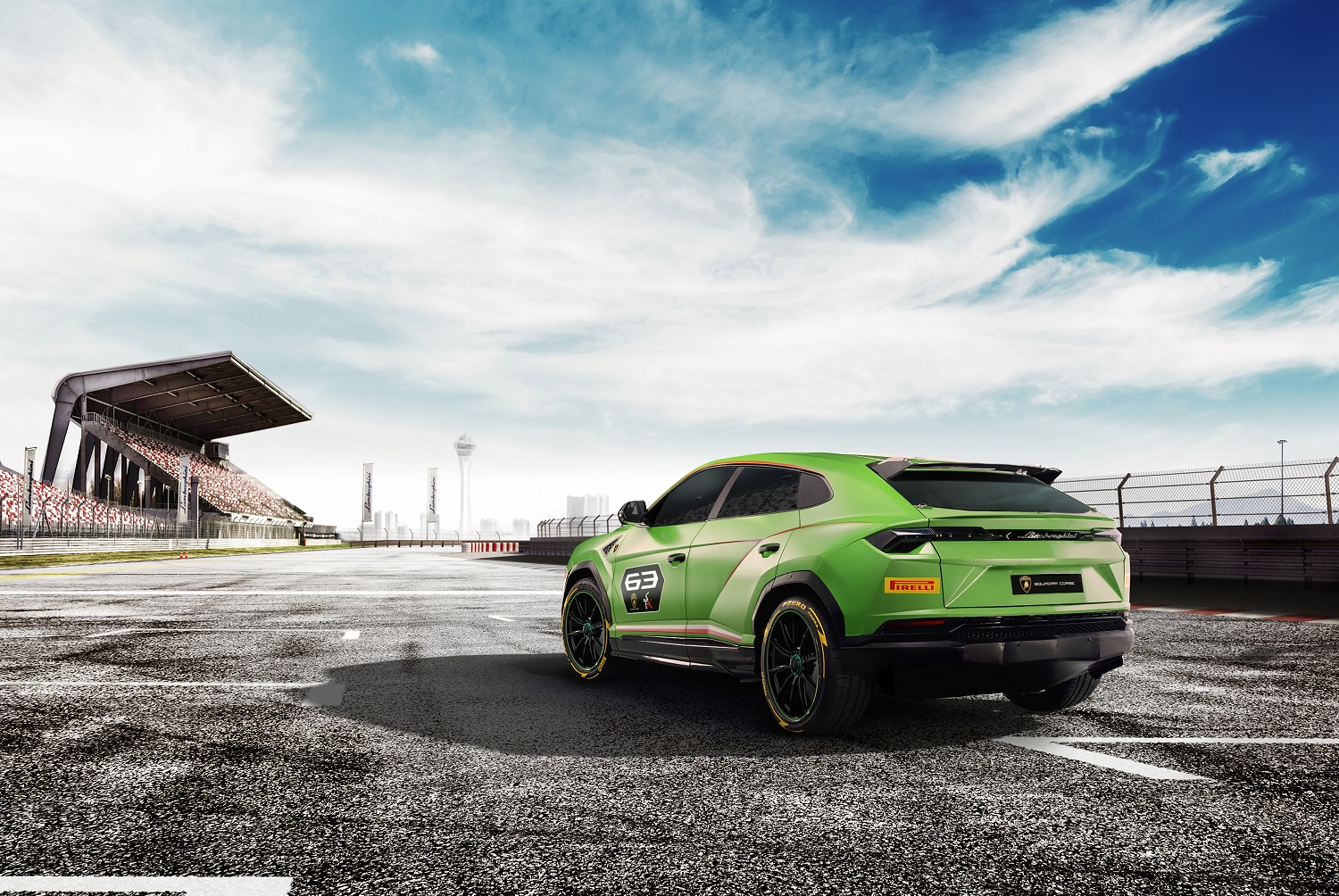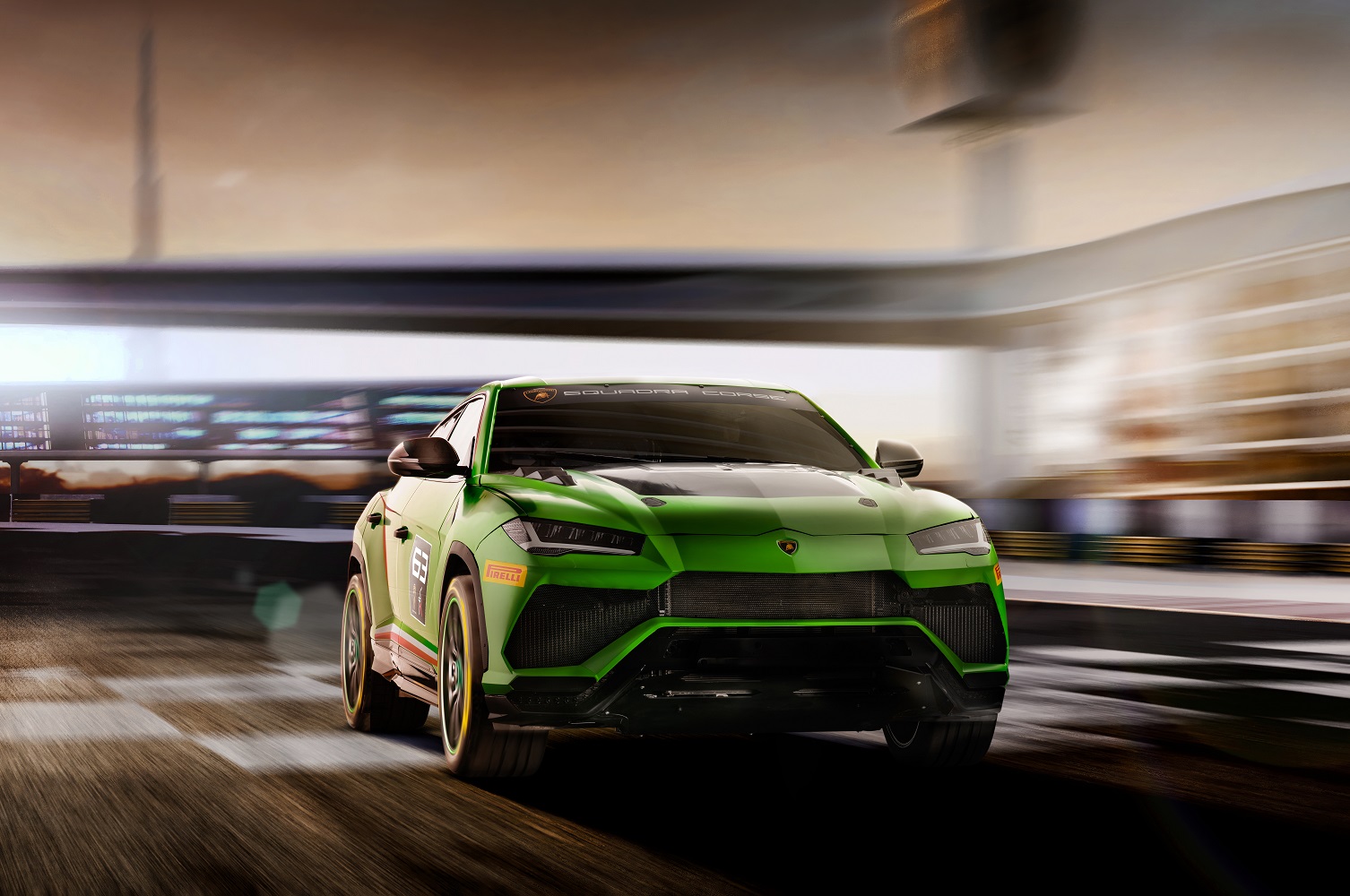
With four seats, four doors, and up to 9.8 inches of ground clearance, the Urus isn’t the type of low-slung, wedge-shaped Lamborghini you’re used to seeing on Instagram.
It’s a different kind of bull developed to withstand the trials and tribulations of commuting while carrying a family and their gear. This mission doesn’t exempt it from the need to deliver the raw, jaw-dropping performance buyers expect from a car wearing the Raging Bull emblem, and Lamborghini wants to prove what its SUV is capable of by launching a race series openly only to Urus drivers. Maurizio Reggiani, the head of the company’s research and development department, told Digital Trends that turning a Urus into the ST-X race car is easier said than done, but his team is up to the challenge.
“We needed to identify the components that can remain exactly the same, and the ones that must be modified in order to be suitable for racing.”
Lamborghini has a history of channeling the lessons it learns on the track to its regular-production models. Much of the hardware found in the physics-defying Huracan Performante (which Digital Trends called “the ultimate in street-legal excitement”) trickled down from the GT3-spec race car, for example. Asked if the ST-X can spawn a super-Urus, Reggiani smiled and said simply “yes” without giving us additional details. In other words: There is clearly much more to come. Sounds to us like an SV Urus will drop soon.
Reggiani explained Lamborghini boss Stefano Domenicali asked him to make something cool with the Urus shortly after the model made its debut in 2017. “My response was that it must be cool, but it must also be able to prove what we say every time: It’s a car that performs well on the track and off-road,” he reminisced. This condition set the course the project ultimately followed.
Lamborghini undeniably knows how to make a car that performs well on the track. It also gained a sizeable amount of insight into how to make a true, no-nonsense SUV when it developed the short-lived LM 002 released in 1986. Wedding these two opposite ends of the same spectrum is easier said than done; it’s like trying to clone a mountain goat with the speed and stamina of a cheetah.
The ST-X concept unveiled online in late 2018 accurately previewed what the end result will look like. Starting with a regular Urus plucked from the assembly line, Lamborghini’s in-house team of race car alchemists removed equipment considered frivolous on the track (like much of the sound-deadening material) and replaced metal parts with carbon fiber components until it achieved a 25-percent weight reduction. Weighs-saving measures aside, the modifications made to the ST-X are relatively minor.
“We began contacting the organizers of RallyCross, but we think our car is too wild for that.”
“The hardest part of the project was deciding the level of common components shared by the Urus and the ST-X. We needed to identify the components that can remain exactly the same, and the ones that must be modified in order to be suitable for racing. The target is to change as little as possible,” Reggiani affirmed. It’s an on-going process; Lamborghini has already built one prototype which is “going up and down everywhere,” he added.
He wasn’t set on creating a Urus-specific race series from the get-go. “We began contacting the organizers of RallyCross, but we think our car is too wild for that,” he told us. Besides, starting from scratch lets Lamborghini decide precisely where and when to hold each race. Some will take place on asphalt, others will take competitors through gravel, sand, and mud. And, some events will even feature a mix of different terrains that promises to be demanding to drive through and entertaining to watch.
Enthusiast looking forward to seeing a Lamborghini jump a sand dune will need to wait a little bit longer to find out when the ST-X will line up on the starting grid for the first time. The series – whose name hasn’t even been revealed yet – is scheduled to launch in 2020. It will take participants on a tour of tracks located in Europe and in the Middle East.








